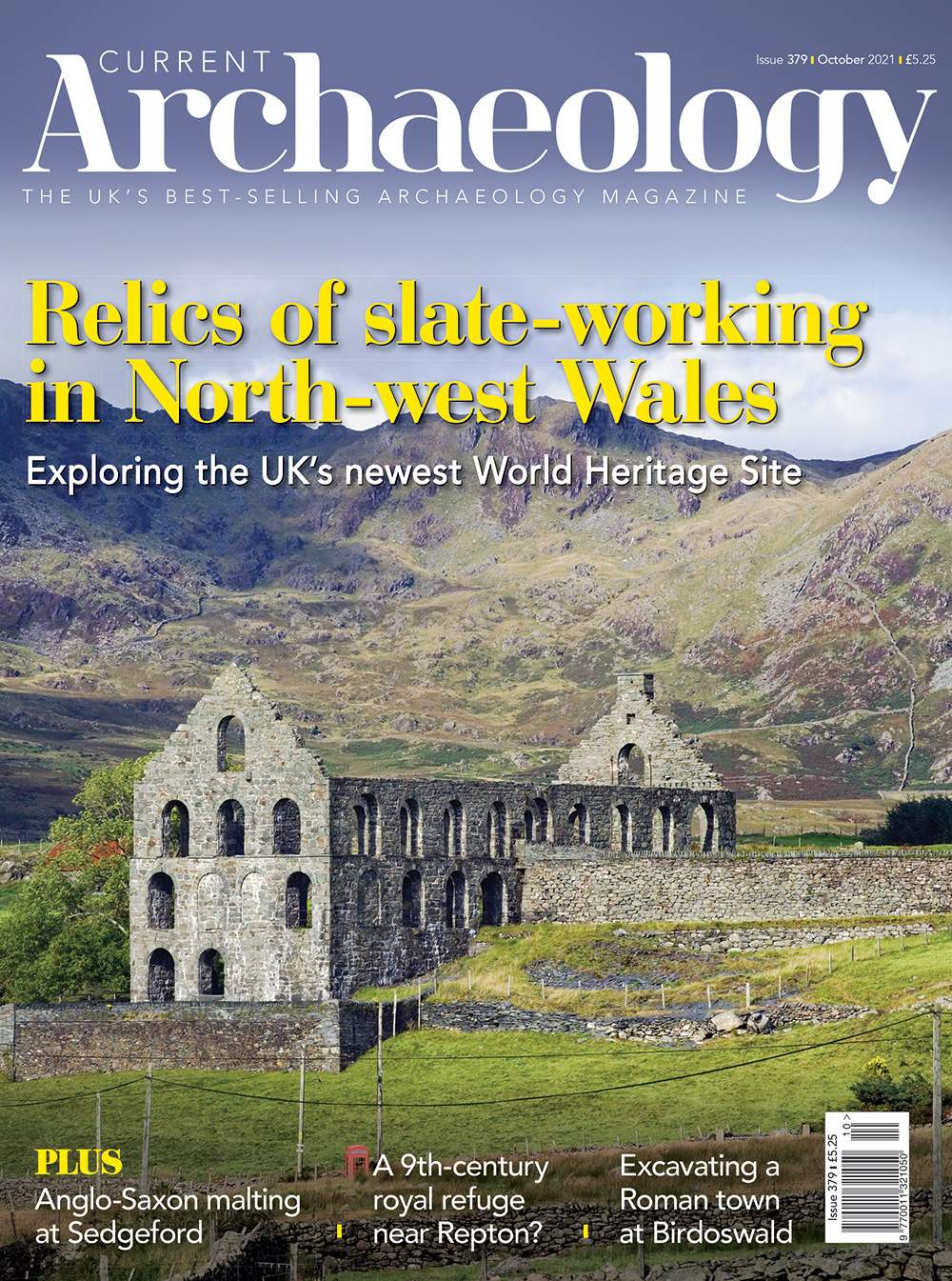As things opened up again this summer, it has been wonderful to visit excavations and exhibitions again, to meet project directors and curators, and to see archaeological discoveries with my own eyes – what a difference a year makes. This month we have a number of shorter articles reporting on these trips – I have also been to Bath and, by the time you read this, will have visited digs in Winchester and Caistor St Edmund too, so watch this space for future coverage of these and other sites (have notebook, will travel!).
Our first feature takes us to Anchor Church, near Repton, where recent architectural analysis has revealed hints that the artificial caves may boast early medieval origins and links to a royal religious recluse.
Next comes news from visits to two summer digs: one exploring the extra-mural settlement at Birdoswald Roman fort on Hadrian’s Wall, and another at Sedgeford in north-west Norfolk, where a long-running project is uncovering traces of middle Saxon malting.
From there, we are marking the inscription of the UK’s newest World Heritage site: the dramatic landscapes associated with slate-working in north-west Wales. This month’s ‘In Focus’ ties into this theme, featuring the UK’s other UNESCO-recognised sites and how this status can be threatened or, in the recent case of Liverpool, lost.
Speaking of special status, this year marks the Sussex Archaeological Society’s 175th birthday, making it one of the oldest county-based archaeological societies in the country. We have been learning about its origins following a dramatic discovery at Lewes Priory, and the historic properties in its care; this is followed by a spotlight on one of its more enigmatic sites, the Long Man of Wilmington.

